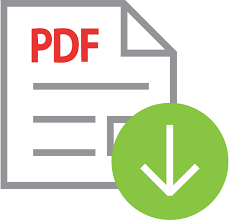The Analysis of Euphemism in "Code Switch" by NPR Podcast
 ), Refnaldi Refnaldi(2),
), Refnaldi Refnaldi(2), (1) Universitas Negeri Padang
(2) Universitas Negeri Padang
 Corresponding Author
Corresponding Author
Copyright (c) 2025 Amalia Gresiwari
DOI : https://doi.org/10.24036/ell.v14i1.132937
Full Text:
 Language : en
Language : en
Abstract
As technology advances, the number of platforms available for accessing information continues to grow. This study examines the forms and functions of euphemisms in an informational platform, specifically a podcast. This research is analyzed by identifying the form of euphemism based on Warren (1992) and the function of euphemism by Burridge (2012). This research uses descriptive qualitative methods to get the results. This research found that metaphor is a form that is often used at 44%. Followed by understatements at 20%. Other forms such as compounding, particularizations, implications, overstatement, acronyms and loan word are below 5%. For the function, the most commonly found is protective 37%, followed by provocative 23%. However, other euphemism functions are below 15%. The findings conclude the importance of euphemisms in shaping discourse on sensitive topics such as politics and race. Euphemisms serve as a strategic tool in communication, allowing speakers to discuss controversial topics in a more acceptable manner. Future research could explore the role of euphemisms in other podcast genres or media platforms to gain a broader understanding of their impact on public discourse.
Keywords
References
Allan, K. & Burridge, K., (1991). Euphemism and dysphemism: language used as shield and weapon. New York: Oxford University Press.
Cendriono, N. (2020). The use of the euphemism form as Madiun's cultural societies and effect in language teaching. In The International Seminar on Education (pp. 635-638).
Durepos, P., Akhtar-Danesh, N., Ploeg, J., Sussman, T., & Kaasalainen, S. (2021). Caring ahead: Mixed methods development of a questionnaire to measure caregiver preparedness for end-of-life with dementia. Palliative medicine, 35(4), 768-784.
Fernández, E.C. (2005). Euphemistic strategies in politeness and face concerns. Pragmalingüística, 77-86.
Hewett, D. (2012). The nature of human communication. The intensive interaction handbook, 3-8.
Jing-Schmidt, Z. (2022). Euphemism. Handbook of Pragmatics, 125–145. https://doi.org/10.1075/hop.24.eup1
Jones, R. (2013). Communication in the real world: An introduction to communication studies. The Saylor Foundation.
Leary, M. R., "Toward a Conceptualization of Interpersonal Rejection," in Interpersonal Rejection, ed. Mark.
Ren, C., & Yu, H. (2013). Euphemism from sociolinguistics perspective. Studies in Sociology of Science, 4(4), 45-48.
Tannen, D. (1995). Talking from 9 to 5. New York: William Morrow.
Warren, B. (1992). What euphemisms tell us about the interpretation of words. Studia linguistica, 46(2), 128-172.
Wilson, K. G. (1993). The Columbia Guide to Standard American English. Columbia University Press.
 Article Metrics
Article Metrics
 Abstract Views : 49 times
Abstract Views : 49 times
 PDF Downloaded : 2 times
PDF Downloaded : 2 times
Refbacks
- There are currently no refbacks.
Copyright (c) 2025 Amalia Gresiwari

This work is licensed under a Creative Commons Attribution-NonCommercial 4.0 International License.












